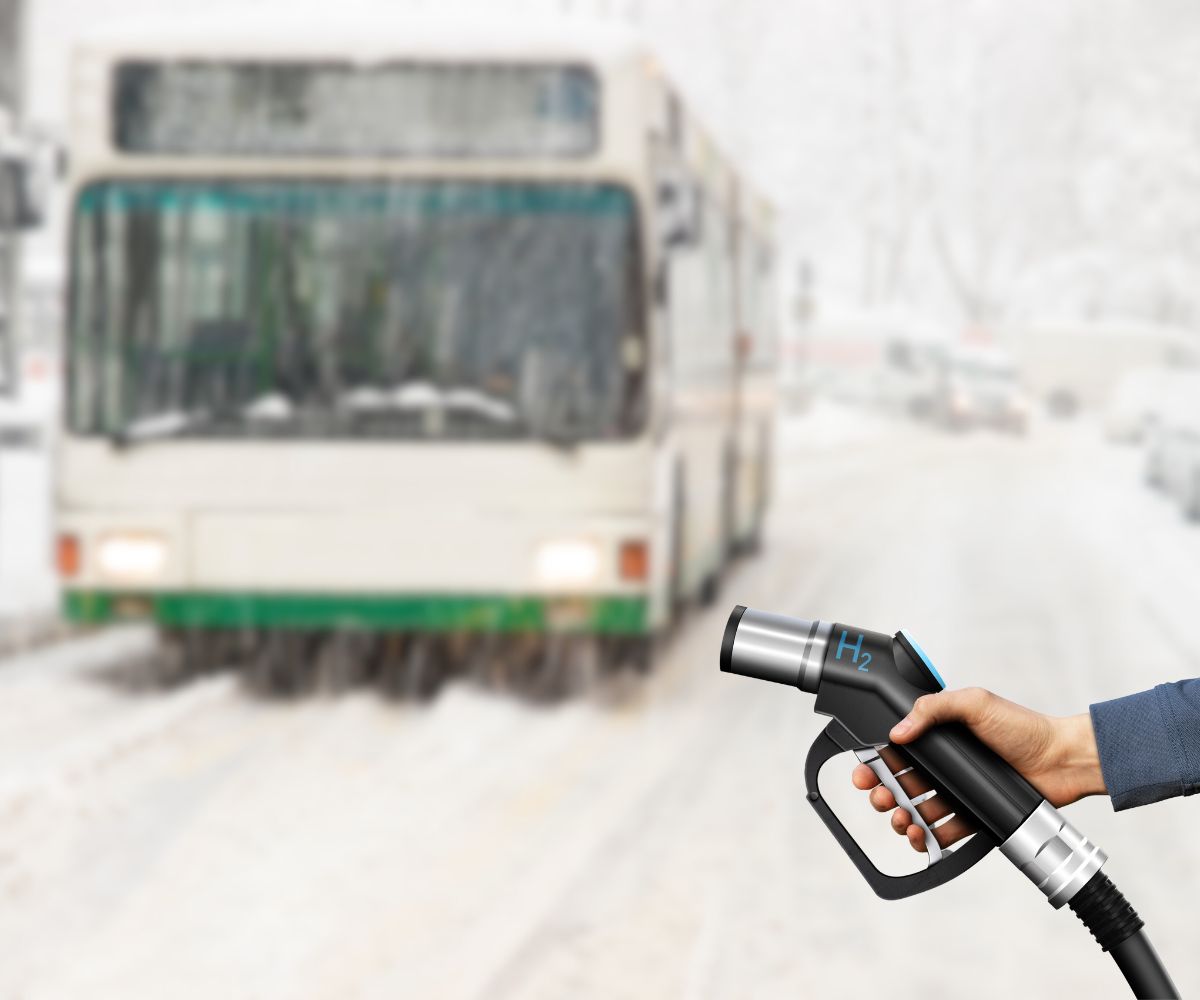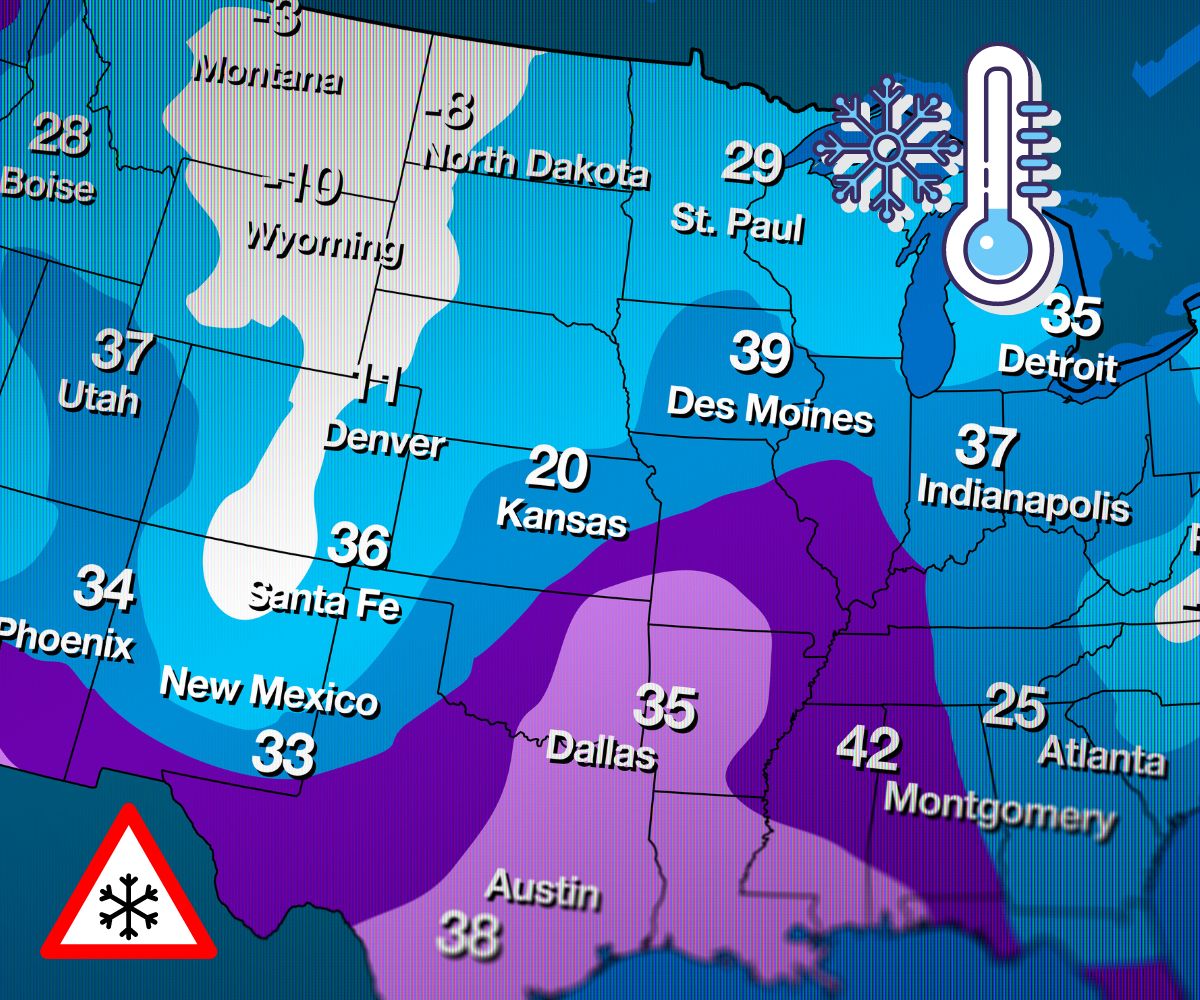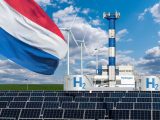
EV Owners Confront Severe Complications Amid Recent Harsh Winter Blast
January 22, 2024As winter’s grip tightens, EV owners and industry innovators are keenly observing the impact of cold weather on electric vehicle battery range. The issue extends beyond mere inconvenience, posing a significant technical challenge that puts our current technological advancements to the test.
The United States experienced record-breaking cold temperatures. An intense Arctic blast swept across the country, disrupting normal life and bringing snow, freezing rain, and dangerously low temperatures. The bitter cold stretched from New York to the Midwest, shattering low-temperature records in Kansas City, Seattle, and St. Louis, as reported by Forbes. In Iowa, temperatures were expected to drop to a life-threatening -35 degrees Fahrenheit.
According to a report by The New York Times, electric vehicle (EV) owners have been facing significant challenges in the recent cold snap. An Uber driver recounted that his Chevy Bolt, which usually charges in an hour, took five hours to charge in the cold weather. There have also been reports of EV owners unable to open their car doors and experiencing slower charging times.
Impact of Cold Weather on EV Battery Range
The Impact of Low Temperatures on Electric Vehicle Battery Performance
Electric vehicle batteries, primarily composed of lithium-ion cells, exhibit sensitivity to temperature variations. At the heart of an EV’s propulsion system, the battery’s function is to store and discharge electrical energy that powers the electric motor. In an ideal scenario, these batteries operate at optimal efficiency within a temperate range, typically between 20°C and 25°C.
As temperatures plummet, the battery’s internal chemical reactions decelerate. The lithium ions responsible for carrying charge within the battery traverse with decreased velocity in cold conditions, which inherently diminishes the rate at which energy can be extracted. Consequently, this reduction manifests as a shortened driving range, for the vehicle necessitates a higher electrical input to maintain performance and manage ancillary functions, such as heating the cabin.
Furthermore, cold weather necessitates that a portion of the stored battery energy must be allocated to warming the battery itself to maintain operational efficiency, a process referred to as thermal management. This energy allocation is imperative, for it preserves the integrity of the battery and optimizes longevity but simultaneously detracts from the energy available for locomotion.
Charging an EV’s battery in cold conditions can also pose challenges. Slowed chemical reactions not only impair discharge efficiency but concomitantly inhibit the battery’s ability to accept charge. Thus, EV owners may observe extended charging durations during colder months. This factor, among others, reiterates the need for a robust charging infrastructure capable of accommodating climatic variability.
These problems don’t happen with hydrogen energy vehicles – See the Toyota’s hydrogen fuel cell car testing
Hydrogen Fuel Cells: A Potential Answer to Cold Weather Challenges?
The issues that cold weather presents to electric vehicles are being tackled, but another form of energy is gaining attention in the automotive sector – hydrogen fuel cell technology. Recent testing of BMW’s iX5 Hydrogen model suggests that hydrogen power doesn’t falter under chilly conditions.
BMW Group conducted final winter trials of the BMW iX5 Hydrogen in one of the coldest places on earth, the Arctic Circle. The hydrogen fuel cell drive system has demonstrated a capability to withstand even the most extreme temperatures while maintaining reliability and everyday usability.
These tests have included rigorous drives on public roads as well as at a test center located Arjeplog in northern Sweden. Despite the harsh, freezing temperatures and challenging icy and snowy conditions, all components of the BMW iX5 Hydrogen – from the fuel cell system to the hydrogen tanks and the power buffer battery to the central vehicle control unit – impressively proved their reliability and suitability for everyday use.
Unlike EVs, hydrogen fuel cells do not experience reduced range or performance in low temperatures. The hydrogen fuel cell drive behaves similarly to a standard combustion engine in terms of usability in intense cold, offering full system power shortly after starting, even in freezing conditions. Furthermore, refueling with hydrogen only takes three to four minutes, even in frosty conditions, which is a significant advantage over the extended charging times often required for EVs in cold weather.
The successful winter testing of the BMW iX5 Hydrogen indicates a potential alternative to battery-electric drive systems. As per BMW, the iX5 Hydrogen can deliver full performance in temperatures as low as -20°C, making it a plausible alternative to a vehicle powered by a battery-electric drive system.
A Look at Battery Chemistry and Material Considerations
Understanding the resilience of battery materials and chemistries in cold climates is important to ensure the efficiency and reliability of electric vehicles (EVs).
Li-ion batteries, popular in the EV market, have varying cold-weather performance. Among them, lithium iron phosphate (LFP) batteries show exceptional resilience due to their stable electrochemical structure at low temperatures.
Nickel manganese cobalt (NMC) batteries, known for their high capacity and energy density, usually face reduced efficiency in cold weather. However, recent versions with tailored cathode compositions and innovative electrolyte formulations show improved low-temperature performance.
Nickel-cadmium (NiCd) and nickel-metal hydride (NiMH) batteries also exhibit significant cold resistance but are less preferred due to environmental concerns and lower energy density.
Recent developments in solid-state batteries, which use a solid electrolyte, offer potential improved cold-weather performance due to their electrochemical stability and lack of a freezing point.
While research continues for an optimal cold-resistant EV battery, current LFP and specially engineered NMC chemistries show promise. Yet, all batteries will veer from ideal performance in extreme temperatures, emphasizing the need for ongoing research and innovation.
Strategies for Preserving Battery Life and Range
Building on the strategies previously outlined to counteract the negative effects of cold climates on electric vehicle (EV) battery efficiency, it’s essential to delve deeper into other potential solutions. Adjustments in user behavior and the use of supplementary products present practical approaches to improve battery lifespan and reliability. Here are some key points to consider:
- EV owners should try to drive in a way that saves energy. This includes slowly speeding up and using regenerative braking wisely.
- Drive at an even speed to cut down on wind resistance, which uses up more battery power in cold weather.
- Plan your routes wisely. Take into account the weather and make sure there are reliable charging stations along the way.
- Use fast chargers at charging stations as they reduce the time your batteries are exposed to cold temperatures.
- However, don’t overuse these fast chargers to prevent your battery from deteriorating.
- If it’s extremely cold, use thermal covers for your electric vehicle when parked. This slows down the cooling rate of the battery’s internal parts.
- Smart parking strategies can help protect your battery in cold weather. For example, park in warmer places like underground garages.
- It’s important to educate yourself about how cold climates can affect your electric vehicle.
- Being proactive and understanding the challenges cold weather brings to your EV can help you maintain your battery life.
With every new technology, including hydrogen, comes an inherent learning curve. As we innovate and push the boundaries of what is possible, we are often met with challenges that require us to learn, adapt, and evolve. Hydrogen technology, for example, presents exciting potential for clean energy but also brings its own set of complexities. From production and storage to efficient utilization, each step demands a deep understanding and fine-tuning. Overcoming these hurdles is part of the journey, leading to continuous improvement, better solutions, and ultimately, mastery of the new technology.
The Importance of Hydrogen in Public Transportation’s Adaptation to Cold Climates
As the global community strives towards more sustainable modes of transport, hydrogen fuel cell technology is increasingly recognized as a critical component in this transformative journey. Hydrogen buses and trains not only contribute to reducing greenhouse gas emissions but also offer a compelling solution to one of the major challenges faced by electric vehicles (EVs) – degraded battery performance in cold weather.
The exploration of hydrogen fuel cell technology for public transport is gaining momentum for several reasons. Firstly, public transportation operates on fixed routes and schedules, frequently exposing them to varying temperature conditions, thereby amplifying the need for a resilient energy solution like hydrogen. Secondly, these vehicles often cover more distances daily than individual EVs, meaning the efficient performance of hydrogen fuel cells can lead to significant societal benefits.
In addition to technological advancements, improvements in refueling infrastructure are essential for the successful implementation of hydrogen-powered public transport. Unlike charging an EV, refueling a hydrogen vehicle can be done quickly, reducing idle time significantly. This is especially important for public transportation, where continuous operation is crucial.
Parallel to these technological enhancements, policy frameworks are also being revisited to support the adoption of hydrogen in public transport. Collaboration between public institutions and stakeholders is essential to create economic incentives for the adoption of hydrogen buses and trains and to design infrastructure projects that will support a robust and resilient hydrogen-powered public transport network.
In summary, as we delve deeper into the era of sustainable mobility, the limitations of electric vehicles in cold weather conditions have become more pronounced. These challenges have been particularly felt in areas severely hit by cold weather – not just in certain regions of the United States, but across the globe.
Electric vehicles, while a significant stride towards a greener future, continue to grapple with issues related to battery performance and efficiency during frigid weather. This has led to a growing interest in alternative sustainable technologies that can withstand such harsh conditions without compromising on performance or convenience.
Enter hydrogen fuel cell technology – a promising solution that is rapidly gaining traction. Vehicles powered by this technology, such as the BMW iX5 Hydrogen, are shining examples of how we can overcome the drawbacks associated with electric vehicles. Hydrogen fuel cell cars offer the benefits of emission-free mobility, coupled with unrestricted usability, even under severe cold conditions.
Moreover, these vehicles boast quick refueling times, a feature that distinctly sets them apart from their electric counterparts. This makes them an increasingly attractive option for many, especially those residing in colder climates.
Therefore, it is no surprise that more and more people are beginning to explore hydrogen energy cars as a viable, eco-friendly alternative. As we strive towards a future of clean energy and sustainable mobility, hydrogen fuel cell technology could very well lead the way, especially in these hard-hit areas of the US and the world.



 HFN News is your leading source for fresh hydrogen and renewable energy updates. Amid the fast-paced growth of hydrogen companies, we provide top-notch news and insights about this exciting sector. Our coverage spans from hydrogen cars to global sustainable initiatives, and we highlight the latest in green jobs and developing hydrogen hubs. We invite you to share your local hydrogen news and explore today’s renewable energy job listings on our site. Thanks for choosing HFN News as your trusted guide to the hydrogen and renewable energy world!
HFN News is your leading source for fresh hydrogen and renewable energy updates. Amid the fast-paced growth of hydrogen companies, we provide top-notch news and insights about this exciting sector. Our coverage spans from hydrogen cars to global sustainable initiatives, and we highlight the latest in green jobs and developing hydrogen hubs. We invite you to share your local hydrogen news and explore today’s renewable energy job listings on our site. Thanks for choosing HFN News as your trusted guide to the hydrogen and renewable energy world!